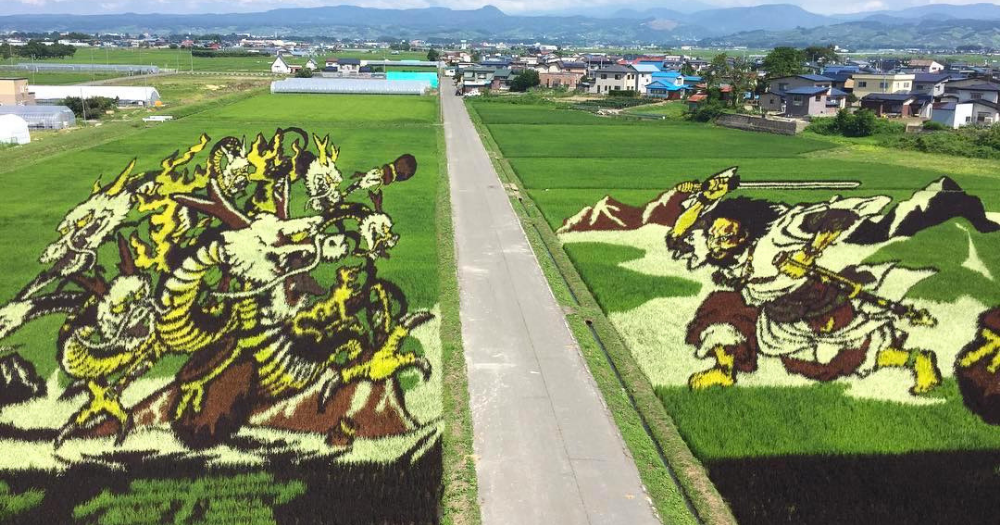Most artists accomplish a lot using paper and paint.
But for one Japanese village in the countryside, their canvas and medium of choice are paddy fields and rice plants.
Giant, detailed rice paddy art
The village of Inakadate in Aomori Prefecture, Japan is famous for their rice paddy art, also known as tanbo art.
Tanbo art has been an integral part of Inakadate's cultural identity since 1993, according to The New York Times.
With a population of only around 8,000 people, surrounded by vast paddy fields and apple orchards, village officials had to find a way to revitalise the shrinking, rural community.
The result are these intricate, large-scale masterpieces that sprawl over the entire 15,000 sq m paddy fields.
Since then, thousands of tourists have been flocking to the village to view the huge artworks in real life.
A new artwork is grown every year.
The tanbo art designs usually feature characters from Japanese mythology and folklore, although recently, the village has also been dabbling in pieces with Western influences.
Here are some designs from recent years:
2015
Star Wars:
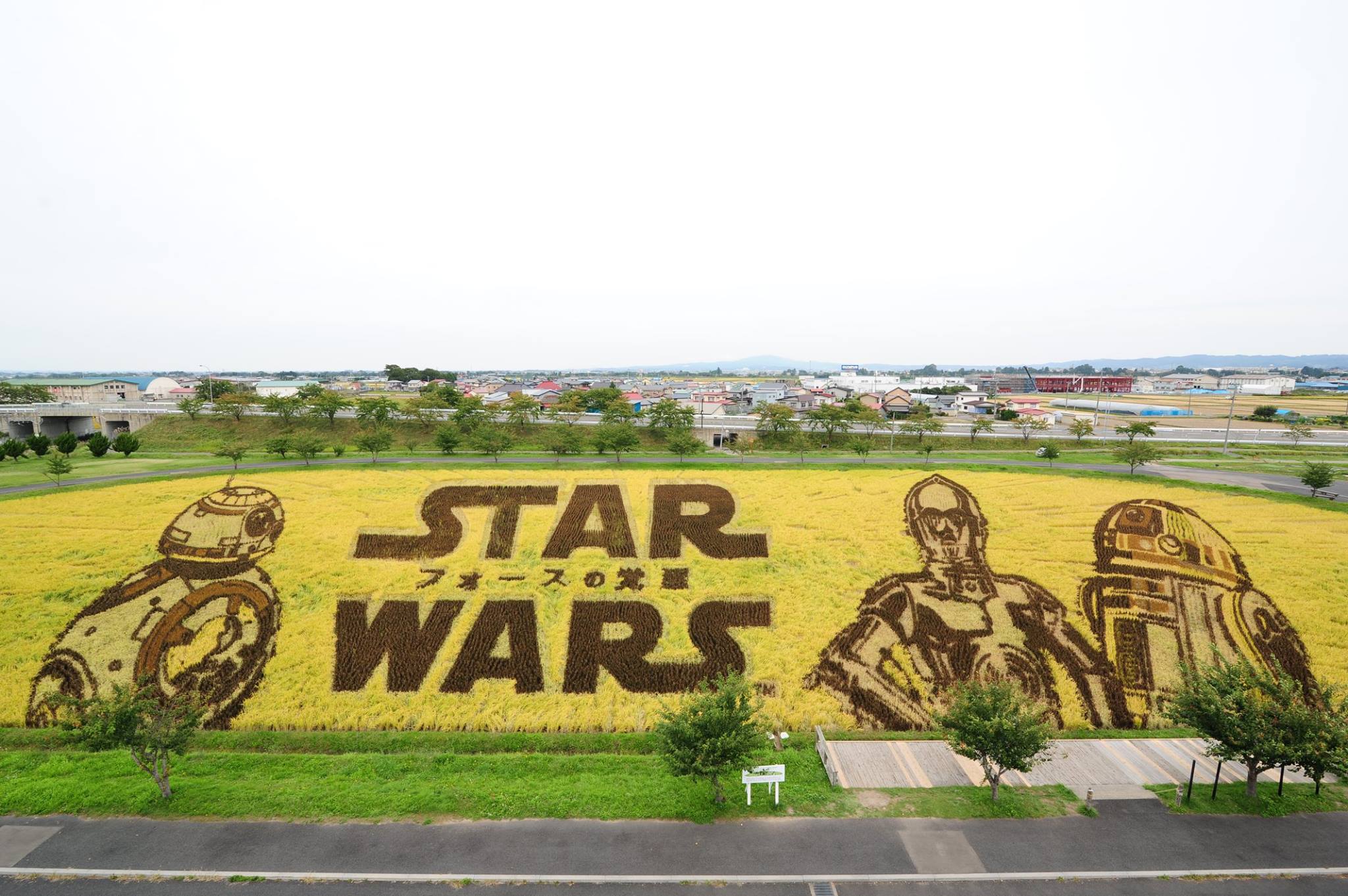 Photo from 田んぼアートの村 いなかだて / FB
Photo from 田んぼアートの村 いなかだて / FB
2016
Godzilla:
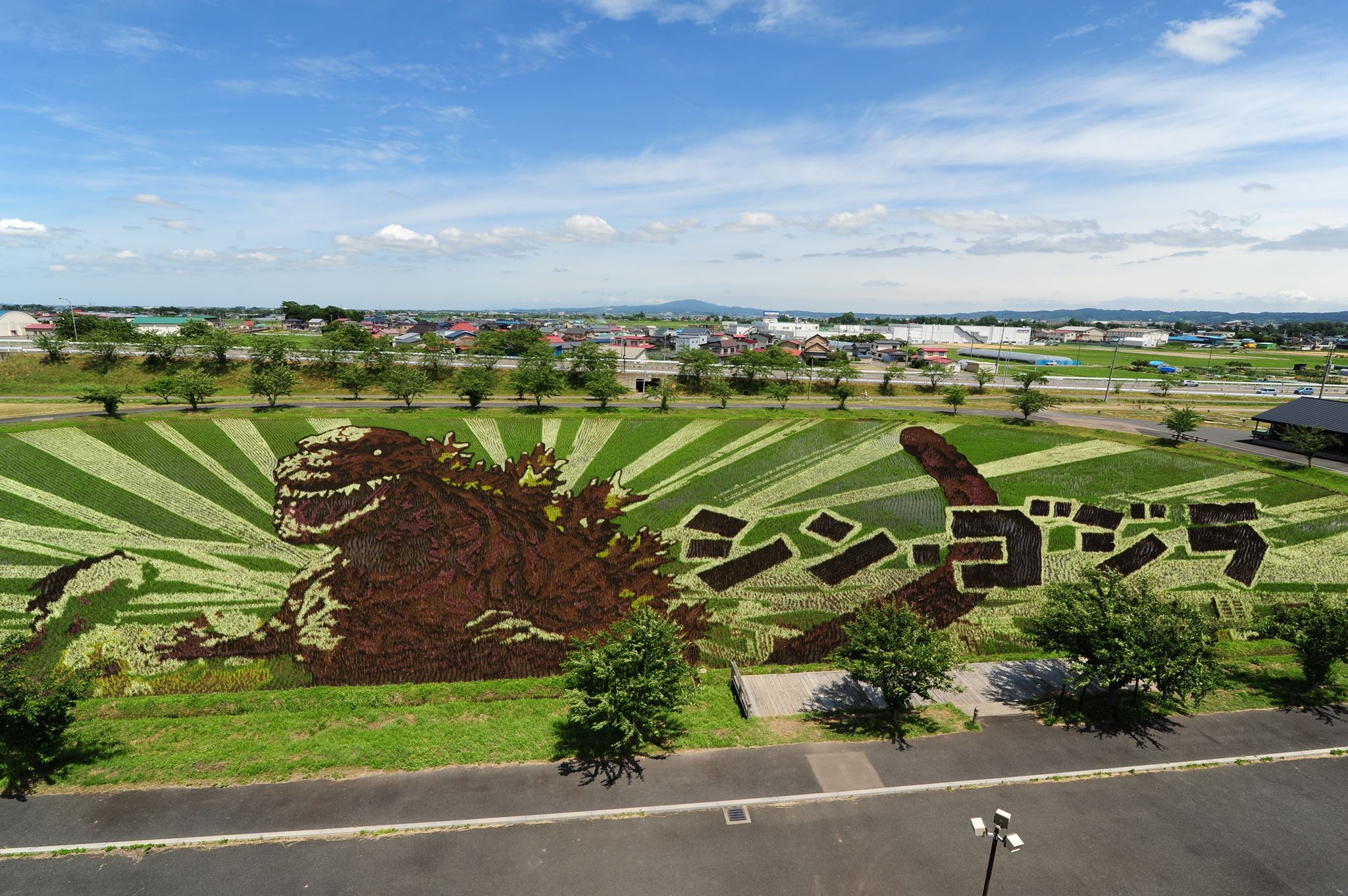 Photo from 田んぼアートの村 いなかだて / FB
Photo from 田んぼアートの村 いなかだて / FB
2017
Legend of Yamato no Orochi (eight-forked serpent) facing off against Shinto god of sea and storms, Susanno:
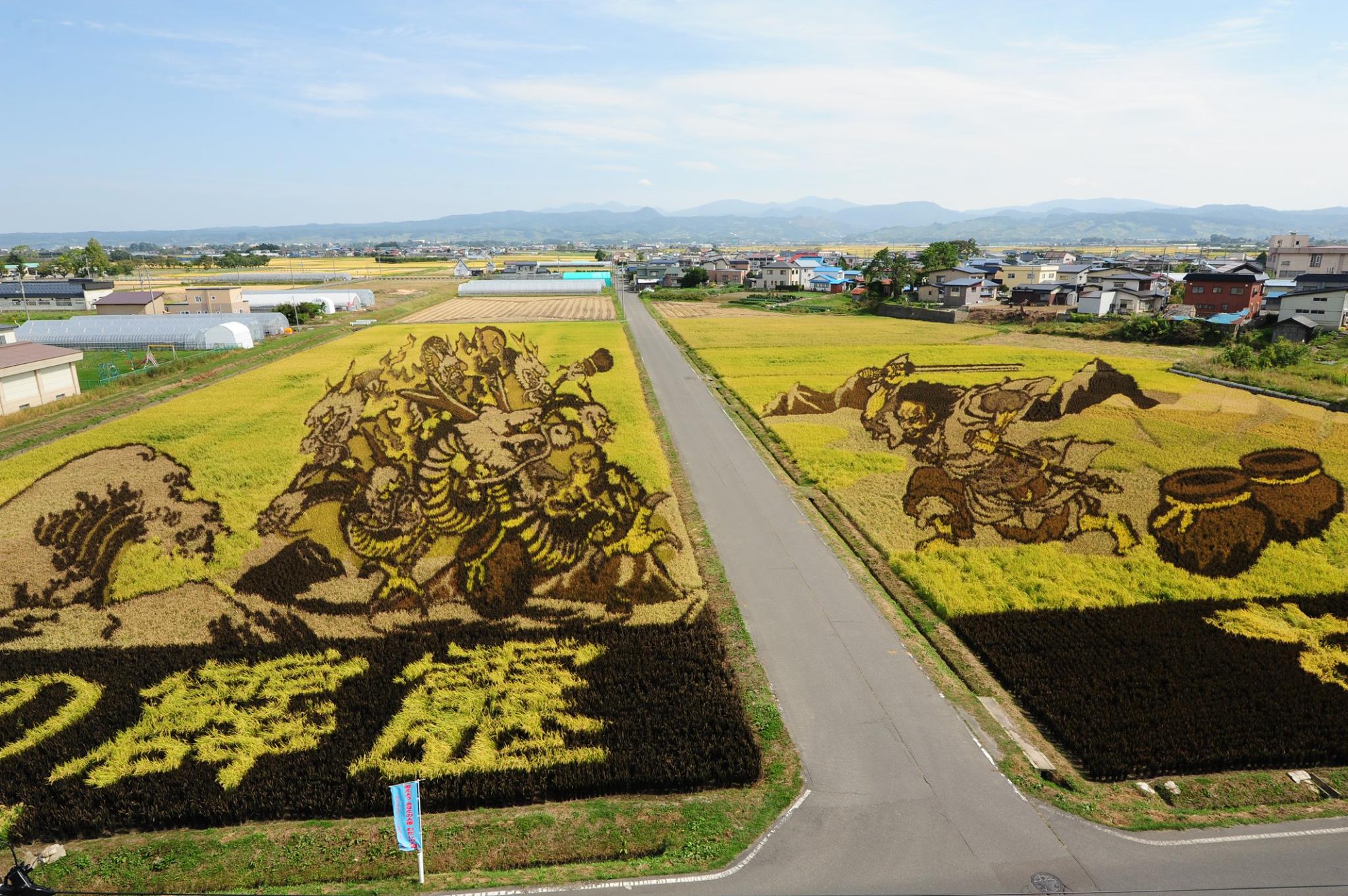 Photo from 田んぼアートの村 いなかだて / FB
Photo from 田んぼアートの村 いなかだて / FB
Momotaro (Peach Boy) from folklore:
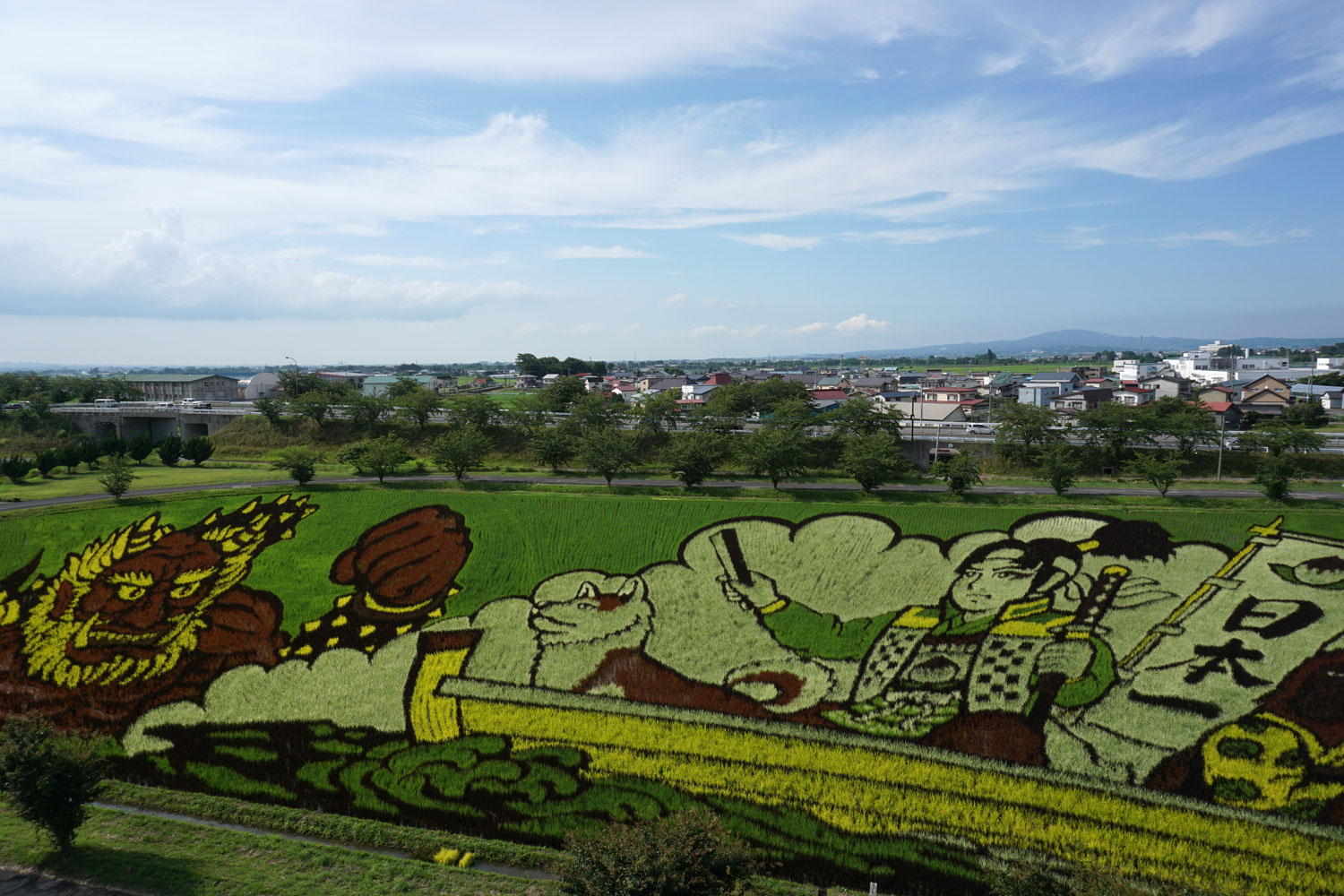 Photo from en-aomori.com
Photo from en-aomori.com
2018
Osamu Tezuka's anime characters like Astro Boy:
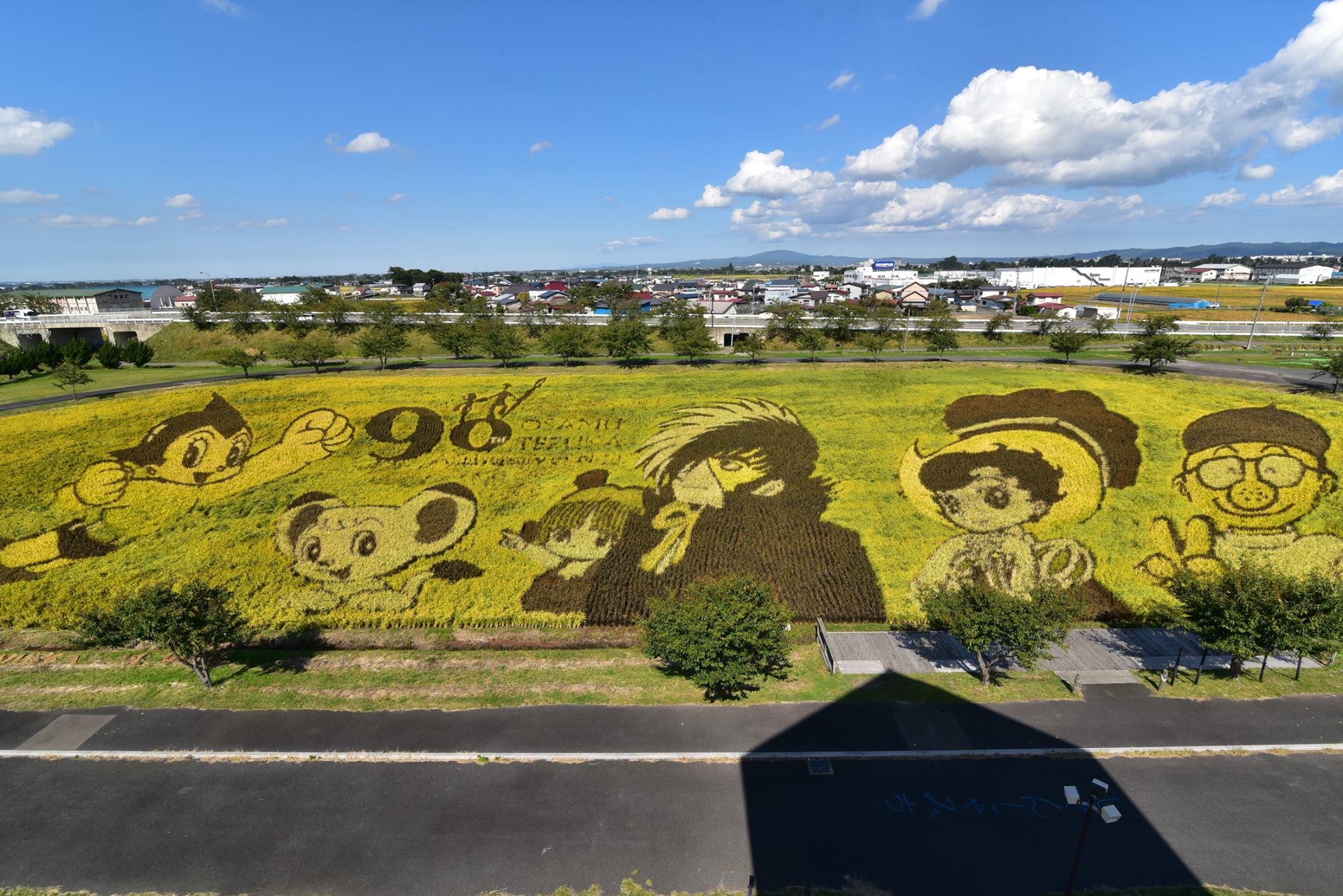 Photo from 田んぼアートの村 いなかだて / FB
Photo from 田んぼアートの村 いなかだて / FB
Audrey Hepburn with Gregory Peck:
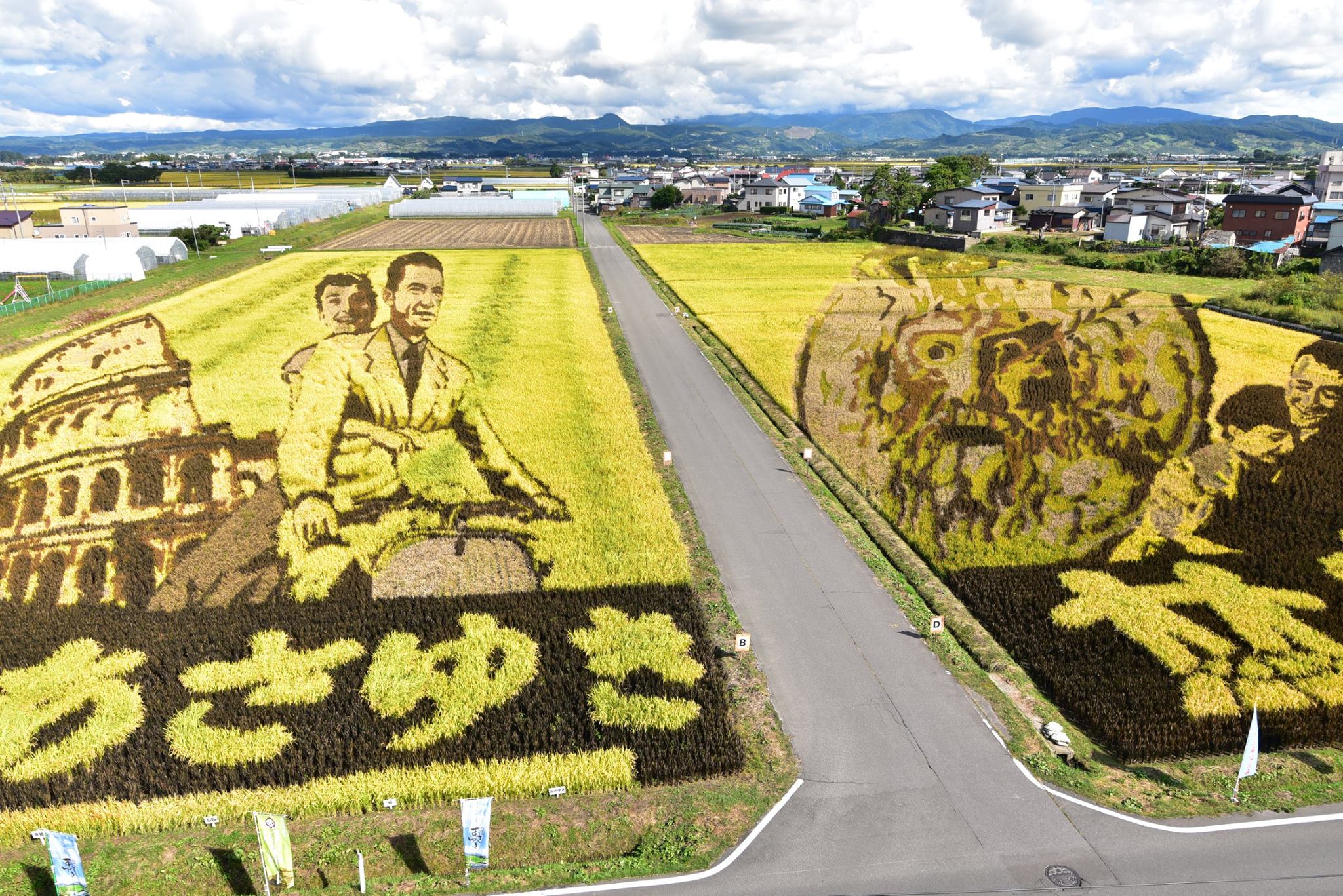 Photo from 田んぼアートの村 いなかだて / FB
Photo from 田んぼアートの村 いなかだて / FB
https://www.instagram.com/p/Byq_XAdhgLh/
A three-month team effort
Considering how large the artwork is, you may be wondering how the designs are conceptualised.
Every year in April, village officials hold a conference to decide what the tanbo art design would be for that year, reported My Modern Met.
Once the theme has been decided, a digital mock-up would be constructed by the officials, which would then be polished up with more details by local art teachers.
The design is then transferred to the paddy fields—based on the mock-up, markers are placed on the ground to map out the drawing in the correct proportions.
More than a thousand local volunteers, including students, then work together to bring the artwork to life by planting different types of rice.
Each kind of rice comes in a specific colour — with colours such as dark red, yellow, green and white — and locals use up to seven different strains of rice to give the artworks its multicoloured hues.
According to The New York Times, some of the rice strains are even genetically engineered to give them their unconventional colour.
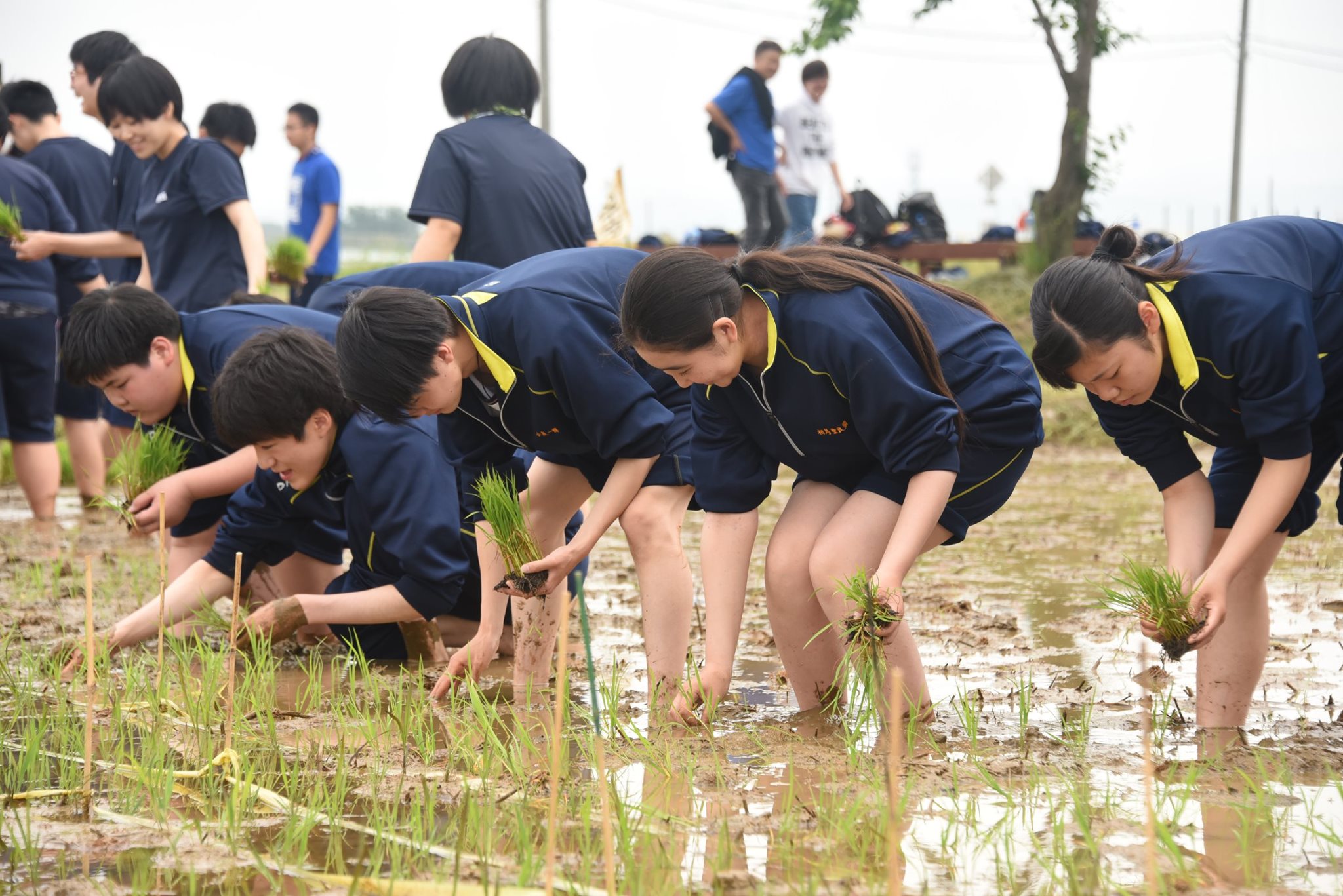 Photo from 田んぼアートの村 いなかだて / FB
Photo from 田んぼアートの村 いなかだて / FB
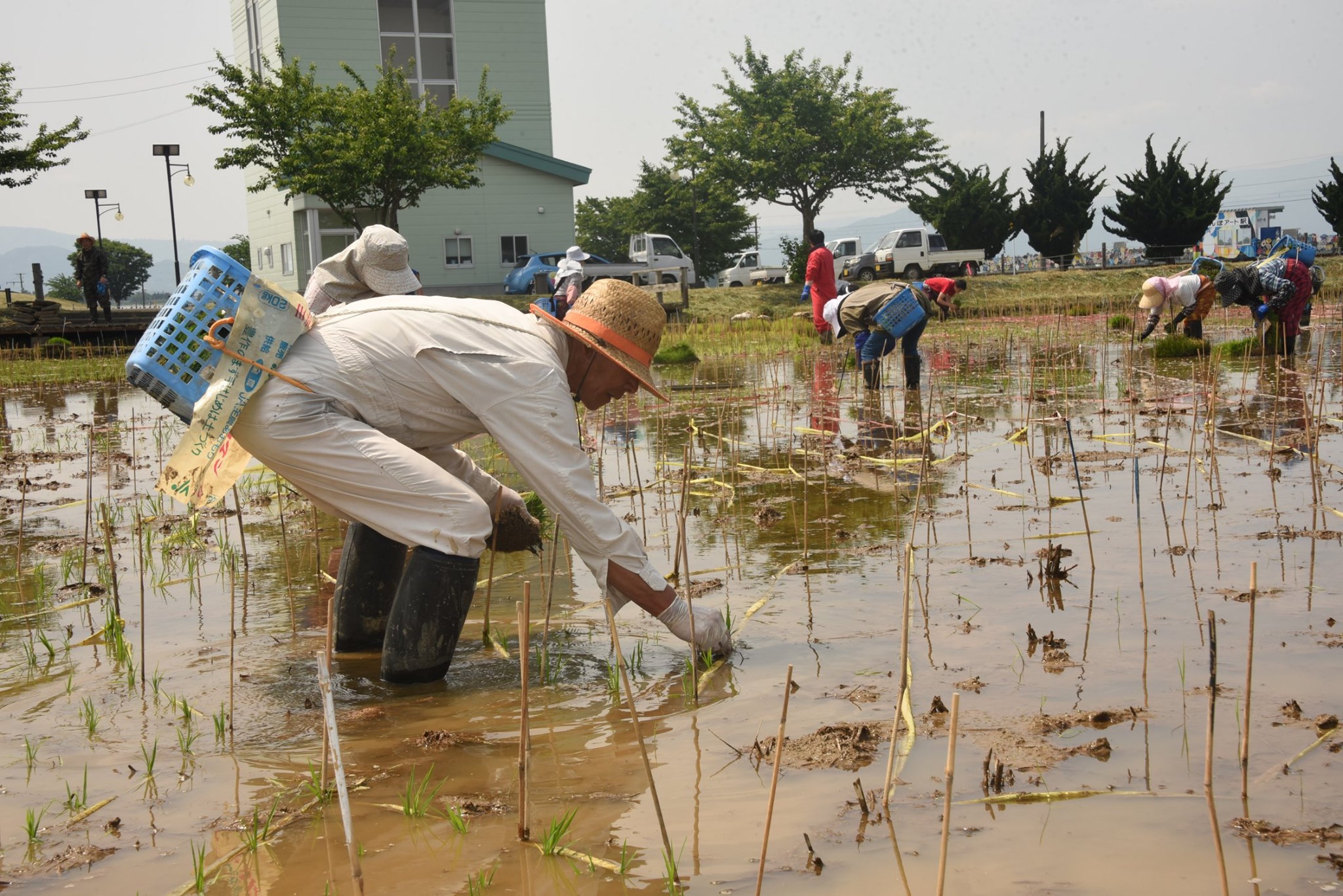 Photo from 田んぼアートの村 いなかだて / FB
Photo from 田んぼアートの村 いなかだて / FB
The entire process before planting can take up to three months.
The costs of designing, planting and maintaining the rice fields are covered by donations from tourists.
Tourists can also view the huge artworks from higher up on an observation deck at the top of Inakadate's village hall.
Here's a peek at what 2019's tanbo art looks like, still in the process of growing.
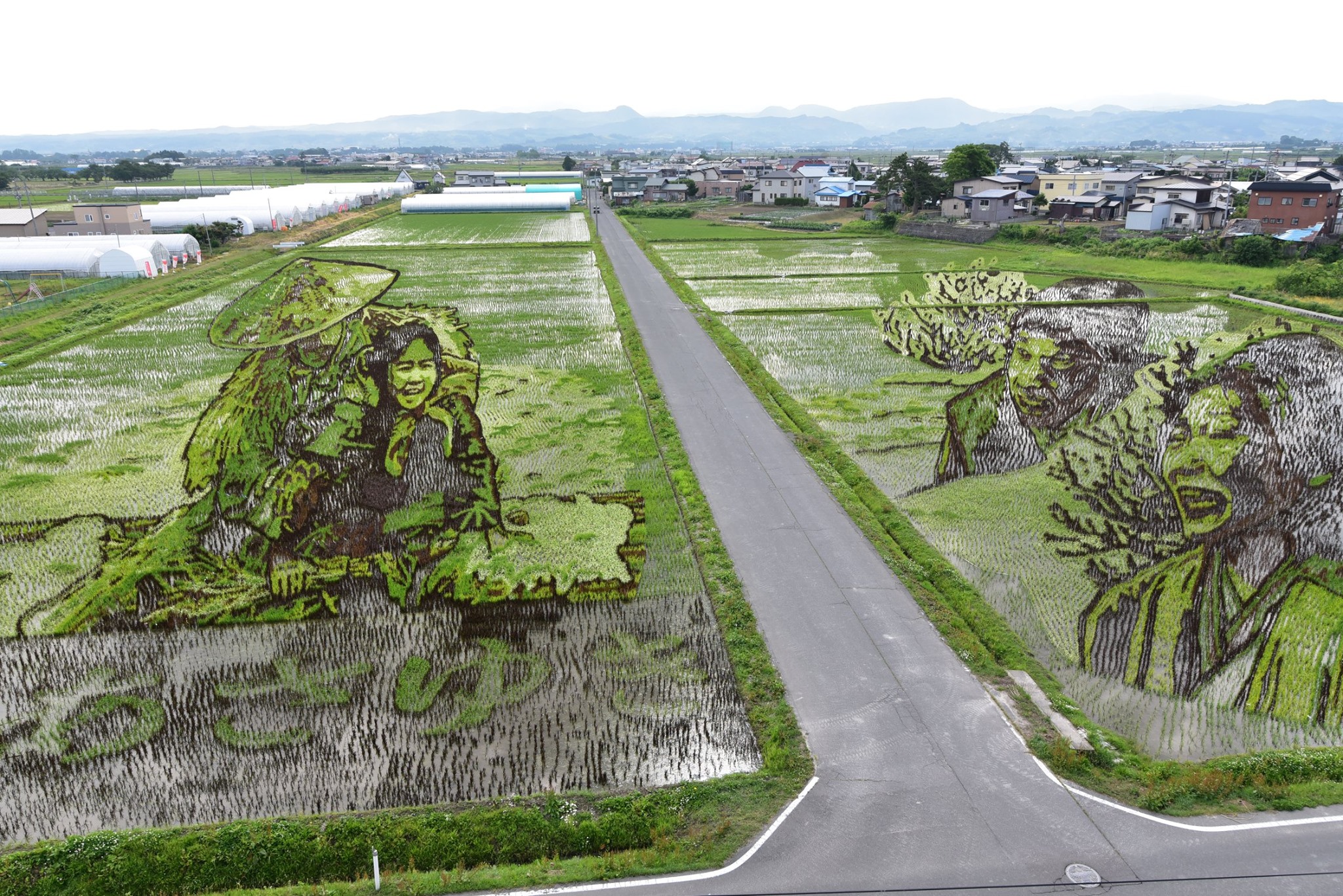 Photo from 田んぼアートの村 いなかだて / FB
Photo from 田んぼアートの村 いなかだて / FB
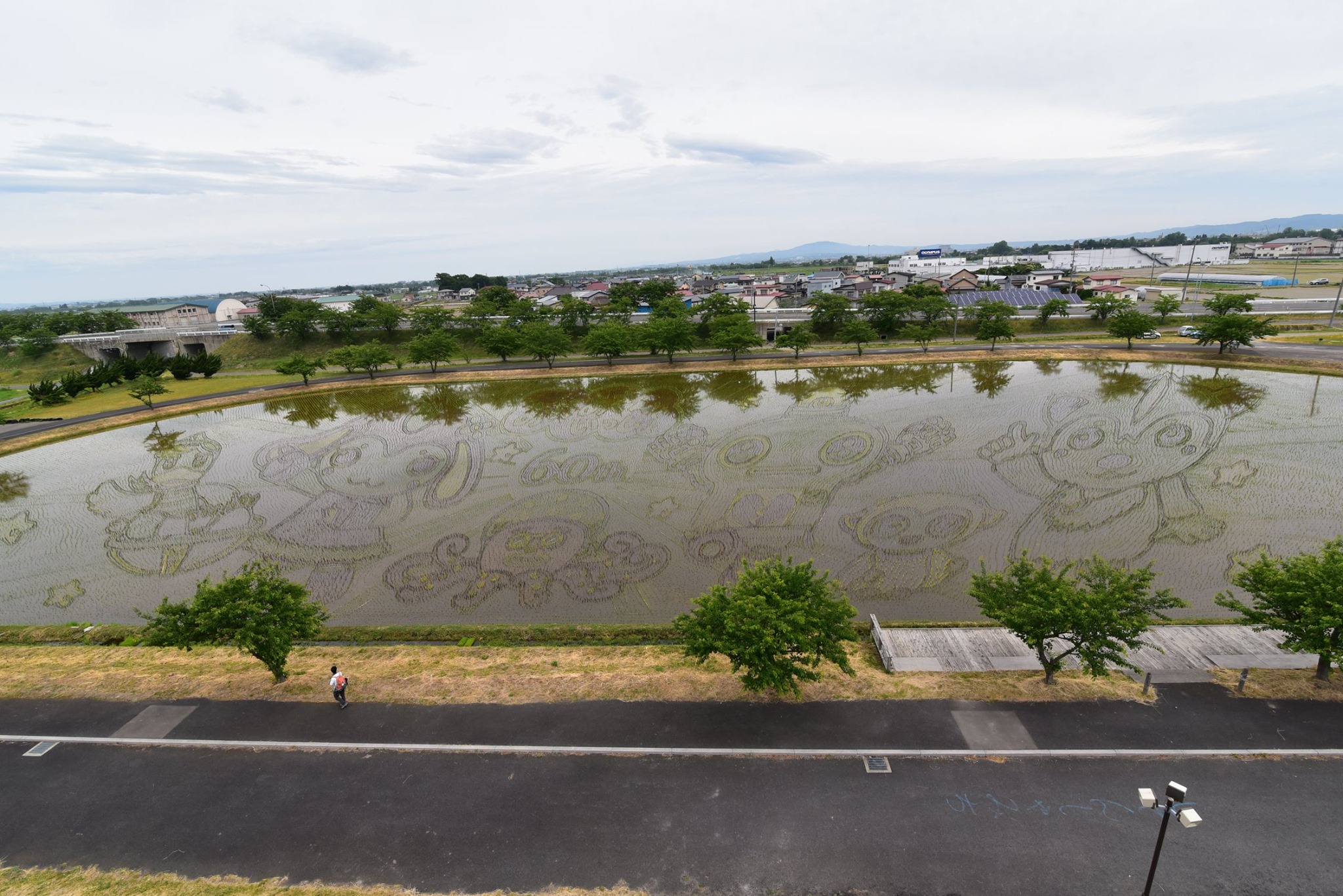 Photo from 田んぼアートの村 いなかだて / FB
Photo from 田んぼアートの村 いなかだて / FB
It is uncertain what are the exact dates tourists can visit the paddy fields and the observation deck this year, but opening dates in previous years usually range from June to October.
Adults also have to pay a small admission fee of ¥300 (S$3.77) to enter the observation deck, while admission for children in preschool and younger is free.
Very cool.
Top photo from @chiko1624 / IG
If you like what you read, follow us on Facebook, Instagram, Twitter and Telegram to get the latest updates.
